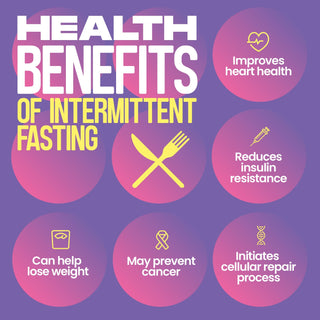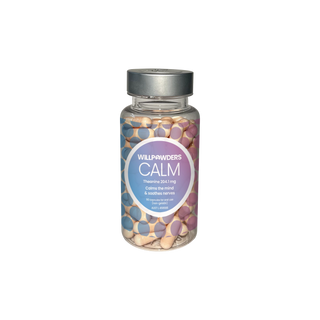
Hack Your Hormones
5 Reasons to get Started with Intermittent Fasting
The How and The Why
Intermittent fasting is based on the idea that timing food intake can influence how the body utilises it. Fasting usually involves restricting the eating window to around 6-8 hours, followed by a fasting window of 16-18 hours. Researchers suggest that early humans naturally followed a pattern of “feast and famine” based on food availability, which may have influenced the human body to use stored fat as an energy source during fasting periods.
The most popular method is the 16:8 method, where you fast for 16 hours (including sleep) and eat within an 8-hour window. Other methods, such as the Warrior Diet (20-hour fast, 4-hour eating window) and Alternate Day Fasting (fasting on alternate days), may also be effective depending on your lifestyle and goals.
Intermittent fasting differs from calorie restriction—it’s more about eating patterns than reducing calories or counting macronutrients. By narrowing your eating window, your body may shift to using stored fat for fuel, potentially aiding in weight management.
How to Fast
Intermittent fasting relies on the notion that the timing of food intake is crucial to how your body will use it. It claims that restricting your eating window to 6-8 hours, thereby extending your fasting window to 16-18 hours, will yield tremendous benefits for fat loss, hormone balance, energy, and insulin stabilisation. From an evolutionary standpoint, researchers say that our ancestors went through periods where food was abundant at certain times and less available at others. This feast and famine pattern conditioned the human body to burn stored fat as its primary source of energy when food was scarce. As well, many ancient religions observed fasting as a way of cleansing and creating mental alertness.
There are several ways to go about intermittent fasting depending on your lifestyle and personal preferences. The most commonly used method is the 16:8 - which consists of 16 hours of fasting and an 8 hour window for eating. Although sixteen hours of fasting may seem like a bit much, keep in mind that sleep will take up between 7-9 hours of your fast. An example of this would be breaking your fast at 11:00 am and eating your last meal at 7:00 pm.
Another Intermittent Fasting approach is the Warrior Diet, consisting of a 20 hour fast and 4 hour eating cycle. Ori Hofmekler, the author of The Warrior Diet, suggests:“there is a dual relationship between your feeding and innate clock. And as much as your innate clock affects your feeding, your feeding can affect your innate clock. Routinely eating at the wrong time will disrupt your innate clock and devastate vital body functions; and you'll certainly feel the side effects as your whole metabolic system gets unsynchronized.” This method is not for everyone and would need to be developed gradually, as twenty hours of fasting may be quite difficult for some. An example of this would be breaking your fast at 2:00 pm and having your last meal at 6:00 pm, allowing for twenty hours of fasting in between.
Block fasting has also gained some popularity; it consists of a full 4-10 day fast done periodically instead of fasting intermittently on a daily basis. As block fasts can last for several days, one would rely solely on water, bone broth, or whey while the body completely cleanses and detoxifies itself. Block fasts, if done at least once a year, have been shown to reduce risk for developing cancer, breakthrough weight loss plateaus, balance hormones, help reach a state of ketosis quicker, improve insulin sensitivity and even increase cellular energy. Even a 24 hour fast is enough to boost the human growth hormone by 1300-2000%! For a block fast to be done safely, a state of ketosis must be obtained first.
Finally, there is the alternate day method, where most of the research on intermittent fasting originated. This system consists of fasting for 2 days out of the week and eating normally for the remaining 5 days. It is important to note that liquids such as water, tea, and coffee may be consumed during the fasting hours to prevent dehydration. Coffee also acts as an appetite suppressant which may help you to get to that first late meal of the day. Each of these methods are effective in their own ways, and useful when done in accordance with one’s schedule and lifestyle.
It is important to note that intermittent fasting is not a calorie-restriction diet, nor does it count macronutrients or portion sizes, but rather, it limits the window in which we consume food during the day. You are not eating less food, but rather eating less often. Changing your eating patterns may be challenging at first. Hang in there though, it only takes the body a short time to adapt and the benefits are well worth it.


The Phases of Fasting
When starting intermittent fasting, your body initially shifts from burning food energy to utilising stored fat, a process called ketosis. As your body adjusts, hunger pangs should lessen as it adapts to using fat as an energy source. Studies suggest that fasting may promote fat oxidation, helping your body efficiently use fat for energy.
The Potential Benefits of Fasting
1. Supporting Fat Adaptation and Weight Management
- Regular fasting periods may help the body become “fat-adaptive,” meaning it can more readily utilise fat as a fuel source. Research suggests intermittent fasting may contribute to body weight management by encouraging fat metabolism, especially when paired with exercise helping to Stabilise Insulin Sensitivity and Blood Sugar.
- Some studies indicate that fasting may enhance insulin sensitivity, potentially lowering the risk of insulin resistance. Improved insulin sensitivity may support better blood sugar regulation, a key factor in reducing the risk of metabolic disorders .
2. Human Growth Hormone (HGH)
- HGH, which plays a role in muscle growth and fat metabolism, can increase during fasting. Research shows fasting may boost HGH levels, which could be beneficial for muscle retention and overall metabolic health .
3. May Benefit Metabolic Health
- Evidence suggests intermittent fasting may contribute to reduced triglycerides, oxidative stress, and inflammation. Studies have shown a possible association between intermittent fasting and a lowered risk of metabolic syndrome, which includes high blood pressure and elevated cholesterol .
4. Supporting the Brain


Long-Term Health Benefits
Intermittent fasting may support longevity and health through various mechanisms. Autophagy—the body’s cellular “cleanup” process—may begin within 18 hours of fasting, promoting cell repair and recycling of damaged components, which could play a role in reducing inflammation and supporting cellular health . Additionally, fasting may reduce glucose spikes, helping maintain stable energy levels and reduce the risk of chronic disease.
Getting Started with Intermittent Fasting
To get started, choose an eating and fasting window that suits your schedule. A common approach is to start with a 12-hour fasting window, gradually increasing to 16 hours. For beginners, it’s often helpful to try a method like the 16:8, where you might eat between 11 am and 7 pm. Avoid snacking to allow your body to fully rest during fasting hours.
Choose Your Fasting Style:
- Clean Fast: No calories consumed during the fasting period.
- Dirty Fast: Allows up to 100 calories of healthy fats during fasting.
- Fat Fast: Break your fast with healthy fats like MCT powder, which may help sustain energy and aid ketosis.
Tips for Success
- Diet Variation for Metabolic Flexibility: Periodic “feasting” days (increased fat intake) followed by “famine” days (extended fasting) may help to “shock” the body and enhance the benefits of fasting. By alternating between regular eating and fasting, you may keep your metabolism and hormonal responses optimally responsive. A weekly 5-1-1 approach (five days fasting, one feast, and one full 24-hour fast) may help you see better results and avoid metabolic adaptation.
- Stay Hydrated: Drink plenty of water, tea, and coffee (in moderation) during your fasting hours to avoid dehydration.
- Healthy Eating Habits: Since intermittent fasting is not a substitute for nutritious eating, it’s essential to consume balanced meals during your eating window. A diet rich in whole foods, vegetables, lean proteins, and healthy fats will support the fasting process and may yield better results.
- Consider Your Circadian Rhythm: Fasting may be most effective when aligned with your natural circadian rhythm, meaning eating earlier in the day and avoiding late-night meals.
- Exercise: Exercising while fasting (known as “fasted exercise”) may boost fat metabolism. Some studies suggest exercising in a fasted state may increase testosterone, potentially enhancing muscle maintenance and strength when paired with regular exercise .


Factors to Consider before Starting:
- Health: If your current diet relies on processed foods, intermittent fasting may not provide the intended benefits. Focus on nutritious, whole foods to maximise fasting’s potential advantages.
- Hormonal Sensitivity: Women, in particular, may want to avoid extended fasting for long periods. Try a few months of intermittent fasting, then take a break before restarting.
- Blood Sugar and Hypoglycaemia: People with blood sugar imbalances should be cautious and consult with a healthcare provider before starting fasting.
- Sleep Quality: Proper sleep is crucial for fasting to be effective. If you have disrupted sleep patterns, consider improving sleep quality before starting fasting.
Is Intermittent Fasting Right for You?
Intermittent fasting may be a supportive option for many people seeking weight management or improved metabolic health. It may also benefit those with inflammatory conditions like arthritis, irritable bowel syndrome, and autoimmune disorders. Since fasting can impact everyone differently, pay attention to how your body responds. If you experience fatigue, irritability, or other unwanted side effects, consider adjusting your fasting approach.
Tracking Your Progress
When making dietary changes, take time to evaluate how you feel. Are you energised? Is your sleep improving? Are you experiencing fewer cravings or better digestion? Intermittent fasting may take a few weeks to yield noticeable changes, so be patient and check in with yourself regularly.
For more insights into healthy fasting, weight management tips, and dietary support, explore our blog or consult with a healthcare professional to tailor intermittent fasting to your needs.
By approaching intermittent fasting mindfully, you can explore the potential benefits while ensuring a balanced, health-conscious lifestyle.
Disclaimer
Our blogs are written with love in the hope that they go some way in helping you feel like the rockstar you are, and whilst we do our due diligence, research like maniacs and fact check our stuff, we know everyone’s journey is different. They are intended to educate and empower you, not usurp medical advice. We would never advise you to stop, adjust, or modify any prescription medication without the direct supervision of your healthcare practitioner, but don’t be afraid to talk to your doctor about your new found knowledge, brought to you by the marvels of nature because they don't know everything! Blogs are always informed by Davinia but often written by a member of the team. Not all blogs reflect Davinia's experiences and sometimes provide alternative perspectives
 Collagen
Collagen
 Protein
Protein
 MCT
MCT
 Electrolytes
Electrolytes
 Vitamins & Minerals
Vitamins & Minerals
 Nootropics
Nootropics
 Accessories
Accessories
 Books
Books













